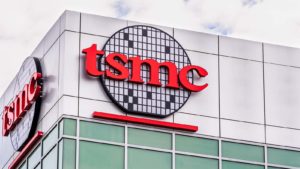Robinhood Markets (NASDAQ:HOOD) is a pioneer in commission-free investing model that has recently become popular among online brokers. So much so that “Robinhood stocks” has become shorthand for stocks popular with retail investors
Anecdotal evidence suggests that even those who would not have considered putting some of their savings to work on Wall Street have been lured by the online broker’s business model.
Meanwhile, the concept of fractional investing has further contributed to the platform’s rising popularity. According to Statista, the number of Robinhood users grew from half a million in 2014 to well over 22 million in 2021.
In fact, the broker claims almost half of all new U.S.-funded retail trading accounts opened from 2016 to 2021 were Robinhood accounts. Against this backdrop, I’ll discuss seven Robinhood stocks that are in the limelight as we start a new year.
Such stocks constitute a diversified portfolio of publicly traded names. Aside from renowned tech giants like Apple (NASDAQ:AAPL) and Alphabet (NASDAQ:GOOG) (NASDAQ:GOOGL), the list has its fair share of meme stocks, as well as low-priced penny stocks in high-risk industries like cannabis.
Of course, the list includes a few of the stalwarts we’ve come to know as reliable names.
With that said, I believe that the best Robinhood stocks are the ones that offer prospects for both earnings growth and stock market performance. Below are seven such Robinhood stocks that should make great additions to any portfolio in 2022 and beyond.
- Alibaba (NYSE:BABA)
- Amazon (NASDAQ:AMZN)
- Chevron (NYSE:CVX)
- Coinbase Global (NASDAQ:COIN)
- Microsoft (NASDAQ:MSFT)
- Roblox (NYSE:RBLX)
- Taiwan Semiconductor (NYSE:TSM)
Robinhood Stocks: Alibaba (BABA)

52-week range: $108.70 – $274.29
Alibaba is the largest online and mobile commerce company in China with extensive international reach.
Last year saw the heavy hand of the Chinese state put immense pressure on many tech names in the country, including BABA, including its founder Jack Ma.
Yet, despite broad Chinese regulatory headwinds, Alibaba continues to dominate the Chinese e-commerce space. The group boasts hundreds of millions of users operating China’s most-visited online marketplaces.
Alibaba released Q3 results on Nov. 18. Revenue increased 29% year-over-year (YOY) to $31.15 billion. However, non-GAAP net income declined 39% YOY to $4.43 billion, or 22 cents per diluted share. Free cash flow stood at $3.45 billion. Cash and equivalents ended the period at 48.3 billion.
“Our global annual active consumers across the Alibaba Ecosystem reached approximately 1.24 billion, with a quarterly net increase of 62 million consumers, and we are on track to achieve our longer-term target of serving two billion consumers globally,” said CEO Daniel Zhang of the results.
The regulatory crackdown has affected investor sentiment and pushed BABA stock down to record low valuations. But Wall Street believes the worst might be over for this e-commerce giant.
After a $2.8 billion fine for anticompetitive behavior, Alibaba recently pledged $15.5 billion to China’s “Common Prosperity” initiative, which focuses on development, job creation and social causes. Management will pay the amount through 2025.
BABA stock hovers slightly below $120 and has plunged 49% in the last 12 months. Now, risk-tolerant investors have an opportunity to buy it at a bargain price. Shares are currently trading at 12.5 times forward earnings and 2.7 times trailing sales. The 12-month median price forecast for Alibaba stock stands at $200.20.
Amazon (AMZN)

52-week range: $2,881.00 – $3,773.08
With a market capitalization of $1.75 billion, the online retailing and cloud giant Amazon needs little introduction. There are over 200 million Amazon Prime members worldwide. In the U.S., about two-thirds of the users are Prime members.
Meanwhile, Amazon Web Service (AWS) boasts a remarkable 32% market share in the global cloud computing space. In terms of competitors, Microsoft’s Azure is next in line.
Amazon announced Q3 results in late October. Revenue increased 15% YOY to $110.8 billion. However, due to higher operating costs, investors saw net income decline to $3.2 billion, or $6.12 per diluted share, down from $6.3 billion, or $12.37 per diluted share, in the prior-year quarter. Cash and equivalents ended came in at $30.2 billion.
“In the fourth quarter, we expect to incur several billion dollars of additional costs in our Consumer business as we manage through labor supply shortages, increased wage costs, global supply chain issues, and increased freight and shipping costs,” said CEO Andy Jassy.
AWS announced significant customer momentum during the third quarter, reporting a 38% YOY increase in operating profit. However, in Q4, management forecasts a modest YOY revenue increase of 4% to 12% due to supply-chain disruptions and surging inflation.
AMZN currently trades at $3420 territory, up only 5% YTD. Further, the stock is trading at a multi-year low of 54 times forward earnings and 3.9 times trailing sales. Long-term investors could see this pullback as an opportunity to buy AMZN stock at a relative discount. The 12-month median price forecast for Amazon stock stands at $4000.
Robinhood Stocks: Chevron (CVX)

52-week range: $83.89 – $119.26
Dividend Yield: 4.60%
Chevron is the second-largest oil company stateside. The company has a highly diversified oil business that ranges from exploration and drilling, midstream all the way to downstream operations.
Chevron announced Q3 results in late October. Total revenue increased 83% YOY to $44.7 billion. Adjusted earnings stood at $5.7 billion, or $2.96 per diluted share, up from $340 million, or 18 cents per diluted share, in the prior-year quarter. In addition, Chevron generated a record free cash flow of $6.7 billion during the period.
“Third-quarter earnings were the highest since first quarter 2013 largely due to improved market conditions, strong operational performance and a lower cost structure,” said CEO Mike Wirth. “We paid dividends of $2.6 billion, reduced debt by $5.6 billion, and repurchased $625 million of shares during the quarter.”
Prior to headlines regarding the omicron variant, oil prices hit a multi-year high of $86 per barrel. Moreover, market reports indicate that oil prices may recover and increase further in 2022 as the largest storage hub in the U.S. draws near empty.
Additionally, shareholders can also count on dividend hikes, which have continued for well over three decades. Chevron’s $1.34 quarterly dividend currently generates an annual yield of 4.6%.
CVX stock sells for $117, up 38% over the last 12 months. Shares are trading at 12 times forward earnings and 1.7 times trailing sales. The 12-month median price forecast for Chevron stock stands at $130.
Coinbase Global (COIN)

52-week range: $208.00 – $429.54
Coinbase Global is a financial technology (fintech) name that has become a pillar of the crypto economy as a leading cryptocurrency exchange. The exchange boasts over $255 billion in assets on the platform as well as 73 million users.
Management released Q3 2021 results in early November. Revenue increased more than 330% YOY to $1.23 billion. Coinbase converted almost a third of its net revenue into profits. Meanwhile, net income surged to $406 million, or $1.62 per diluted share, up from $81.3 million a year ago. Cash and equivalents ended the period at roughly $6.35 billion.
Coinbase is an attractive cryptocurrency stock for investors who do not want to invest in cryptocurrencies directly. Put another way, the exchange allows investors to essentially place a bet on the growth of the entire crypto market. As Coinbase derives almost 90% of its sales from transaction fees, its future valuation relies primarily on the progress towards mainstream adoption of digital assets.
Understandably, Coinbase is largely exposed to the inherent volatility of the crypto space. Regulatory risks globally, including the recent crypto crackdown in China, constitute long-term headwinds.
COIN stock currently hovers at $252 and has plunged from its all-time high due to the recent sell-off in the crypto market. Shares are trading at 35 times forward earnings and 9.2 times trailing sales. The 12-month median price forecast for Coinbase stock is $400.
Robinhood Stocks: Microsoft (MSFT)

52-week range: $211.94 – $349.67
Dividend Yield: 0.74%
Microsoft is one the largest technology companies in the world, with a market cap that exceeds $2.5 trillion. As most InvestorPlace.com readers would know, the group develops and licenses a diversified range of software products and services, providing a crucial competitive advantage.
Among its well-known product offerings are Azure cloud services, the Office 365 productivity suite, and the customer relationship management (CRM) platform Dynamics 365. But the primary growth driver is the Azure cloud service, the second-largest cloud infrastructure platform worldwide after AWS.
Microsoft reported Q1 2022 results in late October. Revenue stood at $45.3 billion, up 22% YOY. Additionally, non-GAAP net income increased 24% YOY to $17.2 billion, or $2.27 per diluted share. Cash and equivalents ended the quarter at $19.2 billion. In addition, management returned $10.9 billion to shareholders in share repurchases and dividends, up 14%.
“We delivered a strong start to the fiscal year with our Microsoft Cloud generating $20.7 billion in revenue for the quarter, up 36% year over year,” CFO Amy Hood said after the announcement.
Despite its massive market cap, Microsoft is still growing at a steady pace. MSFT stock currently hovers at around $336 territory, up nearly 55% over the last 12 months. Shares trade at 37.5 times forward earnings and 14.8 times trailing sales. The 12-month median price forecast for Microsoft stock is $370.
Robinhood Stocks: Roblox (RBLX)

52-week range: $60.50 – $141.60
Roblox runs a popular entertainment platform that allows developers to integrate digital games in immersive 3D worlds. The company takes in a fraction of the money players spend in these games, returning the rest to developers.
The platform has recently been in the limelight as a solid metaverse play following Facebook’s move to rebrand itself as Meta Platforms (NASDAQ:FB). By 2025, the size of the metaverse market should reach $600 billion. With 47.3 million daily active users (DAUs), no wonder Roblox gets plenty of attention.
The platform announced Q3 results in early November. Revenue increased 102% YOY to $509 million for the period. Net loss widened to $74 million, or 13 cents per diluted share, compared to $48.6 million, or 26 cents per diluted share, in the prior-year quarter. Free cash flow increased 7% YOY to $170.6 million. Cash and equivalents ended the period at $1.9 billion.
“Growth in all of our core metrics – DAUs, hours, and bookings – displayed strong year-over-year growth despite lapping Covid-impacted periods and back-to-school seasonality,” said CFO Michael Guthrie of the metrics.
Management has reaffirmed the long-term goal to reach 1 billion DAUs on its platform. It is an ambitious number that would make Roblox among the most dominant metaverse names worldwide.
RBLX stock hit an all-time high of $141.60 on Nov. 22. The stock price now hovers slightly above $100 territory, up 20% in the past six months. But shares do not look cheap at 40.4x trailing sales. Therefore, investors should wait for a pullback before hitting the buy button. The 12-month median price forecast for Roblox stands at $123.50.
Robinhood Stocks: Taiwan Semiconductor (TSM)

52-week range: $105.22 – $142.19
Dividend Yield: 1.55%
Launched in 1987, Taiwan Semiconductor (TSMC) is the largest dedicated chip foundry worldwide, which means it makes chips for other businesses. Among its prominent customers are Advanced Micro Devices (NASDAQ:AMD), Nvidia (NASDAQ:NVDA), and Qualcomm (NASDAQ:QCOM), among others.
Despite the competitive foundry space, TSMC’s scale and cutting-edge technology allow the firm to generate a whopping 39% operating margin.
Taiwan Semiconductor released Q3 results in mid-October. Revenue increased 23% YOY to $14.9 billion. Net income came in at $5.6 billion, or 22 cents per diluted share, up from $4.96 billion, or 19 cents per diluted share a year ago.
“Our third-quarter business was mainly supported by strong demand across all four growth platforms, which are smartphone, HPC, IoT and Automotive-related applications,” CEO Wendell Huang said of the results. “Moving into fourth quarter 2021, we expect our business to be supported by strong demand for our industry-leading 5nm technology.”
In Q3, TSMC reported a market share of over 53 percent in the global semiconductor foundry market. TSMC and its rival Samsung (OTCMKTS:SSNLF) are the only two foundries that can manufacture the most advanced 5-nanometer chips. TSMC is already on track to start producing the next-generation 3-nanometer chips in 2022 for high-end computers and 5G phones. Management predicts the top line to soar at a 10% to 15% rate through 2025.
TSM stock hovers slightly above $120 territory, up 11% in the last 12 months. Given its growing addressable market, shares have a reasonable valuation at 25 times forward earnings and 11.3 times trailing sales. The 12-month median price forecast for Taiwan Semiconductor stock stands at $138.
On the date of publication, Tezcan Gecgil did not have (either directly or indirectly) any positions in the securities mentioned in this article. The opinions expressed in this article are those of the writer, subject to the InvestorPlace.com Publishing Guidelines.
Tezcan Gecgil, Ph.D., has worked in investment management for over two decades in the U.S. and U.K. In addition to formal higher education in the field, she has also completed all three levels of the Chartered Market Technician (CMT) examination. Her passion is for options trading based on technical analysis of fundamentally strong companies. She especially enjoys setting up weekly covered calls for income generation.
